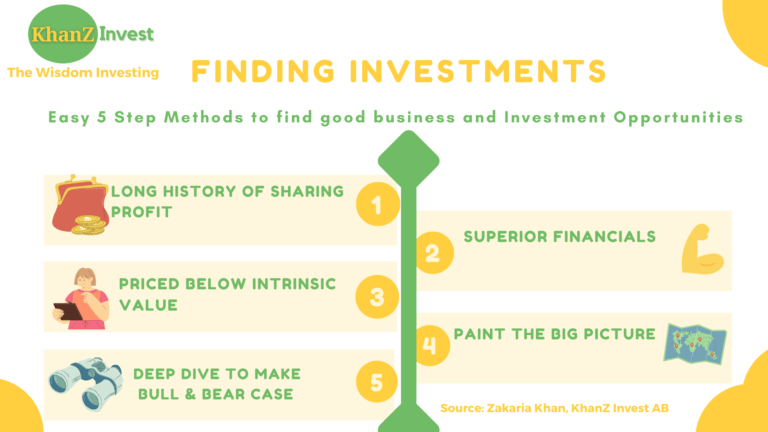Just when I started writing this note, I forgot what was I thinking of writing. No wonder why? According to some research, done by Dr. Jordan Poppenk (Psychology) and his master’s student, Julie Tseng from Queens university suggests that we have about 6,000 thoughts a day. Their method was to count starting and endpoint of a thought. They called it ‘thought worms’, a paper of this study is published in Nature Communications. This article is not about “thought worms” rather it’s about how to structure an innovation. Let’s stay on the topic before the next thought bugs me more!
I began my research career in 2009 starting from doing my MSc. thesis at Ericsson, Sweden. I was one of the very lucky or maybe good students who got the opportunity to do their MSc. These at a large company and got paid for that. Even before I finished my MSc thesis, Ericsson hired me to work as a Researcher. I also worked on European Union’s FP6 research projects. Further, I worked as a research consultant, hired through a consulting company called Manpower. My primary research area was Internet architecture. Looking into possibilities of clean slate approach outside of existing layered architecture.
At that time OSI model (7 layers) or TCP/IP model was the architecture used on the internet. We looked into and proposed layer-free architectures for the Internet. Strata architecture was one proposal and at that time I made the first working prototype of that architecture. Some of my contributions can be found in 4WARD book.
I worked for 2-3 years as a researcher and then decided to leave because I had no plans to live alone abroad; so I came back to Bangladesh. At that time, I was hoping to stay in Bangladesh, work, and live happily ever after. I had looked into a few possibilities and mostly due to working environments, decided to not settle in Bangladesh at that time. By working environment, I mainly mean the working time. Everyone leaves home at 7-8 am and returns home around 8-10 pm. Life revolves around the job and that was not a life I wanted to have for me at that age. So, I decided to return to Sweden and I was lucky to find a job again at Ericsson.
This time, it was not researching, I got a Job in R&D. Began with End to End testing and later changed to system engineering. I systemized the functionalities of 4G. Some of my solutions and modeled architectures are still used in 4G radio technologies products sold by Ericsson. So yes, when you make a phone call or read this article over the internet via your phone, chances are there that you are using my intellect directly or indirectly. You will never see that, I remain the silent guy behind the curtains.
We must discuss many-core and fundamental questions on this topic. Is an idea the same as an innovation? We learned that we get about 6,000 daily thoughts and surely some of those are new ideas. Even 1% of that number gives us 60 ideas. If an idea is the same as an innovation, then hypothetically we should get around 60 innovations per day, right? If not, then what makes the idea an innovation? What is the differentiator? How should we structure our ideas so that the idea will/can develop into an Innovation? The main differentiator between an Idea and a patentable innovation is that an Idea can be an abstract concept and patentable innovation is a technical solution to a problem. Some areas of work are not patentable even when you provide a technical solution to a problem. I am writing 5 simple steps that can guide you to develop your ideas into patentable innovation

Step 1: Check if your Idea can be a patentable innovation?
As silly and trivial as it may sound, the first thing to do is to write down the idea on paper. It is a very important aspect. By writing down the idea, we allow ourselves to start manifesting it into potential solutions. Even if your idea cheeks all the boxes, Some areas of innovation are protected and excluded from patent grants. If your intention is to develop patents then it is a good idea to check which field of expertise the solution falls into. This simple check can save you a lot of unproductive work. Examples of some exclusions are Laws of nature, Scientific discoveries, Presentation of information, artistic creation, Surgical/therapeutic diagnosis or, treatment of people or animals, Mathematical methods, etc.
Computer programs and Business methods generally are not patentable. They are covered via copyright. However, those can be under discussion for potential patent applications.
Step 2: Identify problems & propose new advantages
Necessity is the mother of all inventions. You need to identify problems in the current solution. Unless there are problems with the existing solutions, it is very hard to motivate why there is a need for a new solution. If you can not prove that there is a need for a new solution, it will be very hard for you to get a granted patent for your innovation.
Once you have identified problems in the existing solution, it is time for you to provide a new solution for those problems. Don’t just stop there. You must also present the advantages of your new solution. A new solution must bring additional advantages to qualify for a patent grant.
Step 3: Must keep the “Novelty” Intact
KEEP IT SECRET. Keep your excitement under control. I know, it is one of the most difficult things to do but you must. Your Innovation must not be published or available in Documents, Open lectures, exhibitions, trade fairs, the Internet, etc. Publishing your work destroys the novelty of the innovation and thus you will not be awarded a patent even if every other parameter checks out.
Some exceptions can be found in a few countries (e.g. US, AU, CA… ) but don’t take any risk. If it is absolutely necessary, (i.e. customer presentations) use a Non-disclosure agreement (NDA). Contact a patent attorney beforehand to check that the NDA fulfills the IPR requirements. Provisional protection is possible at short notice if required.
Step 4: Develop Solutions with “Inventive steps”
Novelty looks into the new aspect of your innovation. It is not enough for innovation to just be new. It must also have Inventive steps. Inventive steps broadly ensure that your innovation/solution is creative and a bit clever, i.e. it must be a result of inventive activity that gives an unexpected effect.
The invention must not be obvious for a person skilled in the art. “The person skilled in the art” usually refers to someone who has general and specific knowledge in the technical field. This person understands how to combine materials, methods, elements in this technical field. If your solution is very obvious to that person then that will indicate that this innovation has No inventive ability, No imagination, and thus you might not be granted a patent. The examiner then examines whether the difference of your solution compares to the prior art is sufficient to involve an “inventive step”.
Step 5: Industrial Applicability and Technical Solution
A patentable invention is a technical solution to a problem. A working technical solution for a problem must be described in the patent. So this is the step for you to seat down with your drawing board and start making detailed descriptions. Try to describe the solution as an apparatus/node that implements the solution and a method that describes the steps that the solution performs. Provide schematic figures (flow charts, block diagrams, sequential event diagrams, etc. ). If possible, you should also describe any variants or alternatives to your solution.
Concluding words
I wrote the above steps in a way that the patentable innovation process becomes easily understandable to most people. For that reason, I have simplified many things and expressed broader objectives for you to look into the problem you are solving as an Inventor. So, next time you get an idea, write it down on paper and look through this article to organize your thoughts into actionable steps towards a patentable innovation. If time allows, I have plans to break down the process into smaller parts and explain each part in more detail. How to write an Invention Disclosure can be a valuable topic to cover.
Disclaimer: I am an Inventor not a patent attorney. I am sharing my point of view as an Inventor for your education, fun, and entertainment purpose only. You should do your own study and/or consult a certified patent attorney for advice on patent strategy, filling process, IPR laws, etc. related errands.
#innovation #patentability #investing #khanzinvest.


Pingback: dispenseroo uk
Pingback: ปัง ปัง สล็อต
Pingback: fetichista málaga
Pingback: cornhole
Pingback: Weather in Singapore
Pingback: พอด
Pingback: ไซด์ไลน์
Pingback: นำเข้าสินค้าจากจีน
Pingback: fuckboy
Pingback: ไส้เทียมคอลลาเจน
Pingback: fox888
Pingback: sex girldie
Pingback: Fake site and will take your money! Beware of uplinke.com Spam and make your site go down. Too good to be true SCAM
Pingback: จำหน่ายอะไหล่อุตสาหกรรม
Pingback: 180 mg di ossicodone
Pingback: ดูหนัง jav
Pingback: lucabet88
Pingback: รับสร้างบ้านเชียงใหม่
Pingback: fk brno psd pistols for sale
Pingback: kang vape
Pingback: นักสืบเอกชน
Pingback: สล็อตวอเลท ทุกค่ายดัง
Pingback: Sbo-24hr เว็บแทงบอล ยอดฮิต ปิดเว็บ ย้ายแทงบอลเว็บไหนได้เงินชัวร์
Pingback: Sarah
Pingback: บ้านพักคนงาน
Pingback: sci/sci news/news sci/ science diyala
Pingback: ทัวร์ธุรกิจจีน
Pingback: nova88
Pingback: รถบรรทุกอีซูซุ
Pingback: สล็อตออนไลน์ เว็บตรงไม่ผ่านเอเย่นต์
Pingback: บาคาร่าเกาหลี
Pingback: UV NDT LAMP
Pingback: Massage
Pingback: โคมไฟ
Pingback: หวยไทเกอร์
Pingback: คลินิกเสริมความงาม
Pingback: ทดลองเล่นสล็อต PG SLOT
Pingback: นักสืบ
Pingback: cat888
Pingback: joker369
Pingback: pgslot
Pingback: kc9
Pingback: รีวิวเกมสล็อต
Pingback: สมัคร pg slot
Pingback: pgslot168
Pingback: Peter